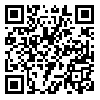1. Von Groote PM, Bickenbach JE, Gutenbrunner Ch. The world report on disability-implications, perspectives and opportunities for physical and rehabilitation medicine (PRM). Journal of Rehabilitation Medicine. 2011;43(10):869-875. [
Link] [
DOI:10.2340/16501977-0872]
2. Shokouhi M, Hosseini SA. Robotics and rehabilitation robotics: A functional method in Iranian medicine. The 1st Iranian Rehabilitation Robotics Conference, 2012 December 5, University of Social Welfare and Rehabilitation, Tehran, Iran. Tehran: University of Social Welfare and Rehabilitation; 2012. [Persian] [
Link]
3. Schöffl V, Heid A, Küpper T. Tendon injuries of the hand. World Journal of Orthopedics. 2012;3(6):62-69. [
Link] [
DOI:10.5312/wjo.v3.i6.62]
4. Mesplié G. Hand and wrist rehabilitation: Theoretical aspects and practical consequences. Berlin: Springer; 2015. [
Link] [
DOI:10.1007/978-3-319-16318-5]
5. Yavari M, Mohammad Sadeghi Sh, Mozaffari N. Evaluation of the results of early mobilization following flexor tendon repair of fingers. Research in Medicine. 2009;33(1):35-38. [Persian] [
Link]
6. Evans RB. Managing the injured tendon: Current concepts. Journal of Hand Therapy. 2012;25(2):173-190. [
Link] [
DOI:10.1016/j.jht.2011.10.004]
7. Robertson JVG, Jarrassé N, Roby-Brami A. Rehabilitation robots: A compliment to virtual reality. Schedae. 2010;1(6):77-94. [
Link]
8. Heo P, Gu GM, Lee SJ, Rhee K, Kim J. Current hand exoskeleton technologies for rehabilitation and assistive engineering. International Journal of Precision Engineering and Manufacturing. 2012;13(5):807-824. [
Link] [
DOI:10.1007/s12541-012-0107-2]
9. Chiri A, Vitiello N, Giovancchini F, Roccella S, Vecchi F, Carrozza MC. Mechatronic design and characterization of the index finger module of a hand exoskeleton for post-stroke rehabilitation. IEEE/ASME Transactions on Mechatronics. 2011;17(5):884-894. [
Link] [
DOI:10.1109/TMECH.2011.2144614]
10. Loureiro RCV, Harwin WS. Reach & grasp therapy: Design and control of a 9-DOF robotic neuro-rehabilitation system. IEEE 10th International Conference on Rehabilitation Robotics, 2007 June 13-15, Noordwijk, Netherlands. Piscataway: IEEE; 2007. pp. 757-763. [
Link] [
DOI:10.1109/ICORR.2007.4428510]
11. Schabowsky CN, Godfrey SB, Holley RJ, Lum PS. Development and pilot testing of HEXORR: Hand EXOskeleton rehabilitation robot. Journal of NeuroEngineering and Rehabilitation. 2010;7:36. [
Link] [
DOI:10.1186/1743-0003-7-36]
12. Wege A, Hommel G. Development and control of a hand exoskeleton for rehabilitation of hand injuries. IEEE/RSJ International Conference on Intelligent Robots and Systems, 2005 August 2-6, Edmonton, Canada. Piscataway: IEEE; 2005. pp. 3046-3051. [
Link] [
DOI:10.1109/IROS.2005.1545506]
13. Ito S, Kawasaki H, Ishigure Y, Natsume M, Mouri T, Nishimoto Y. A design of fine motion assist equipment for disabled hand in robotic rehabilitation system. Journal of the Franklin Institute. 2011;348(1):79-89. [
Link] [
DOI:10.1016/j.jfranklin.2009.02.009]
14. Taheri H, Rowe JB, Gardner D, Chan V, Gray K, Bower C, et al. Design and preliminary evaluation of the FINGER rehabilitation robot: Controlling challenge and quantifying finger individuation during musical computer game play. Journal of Neuroengineering and Rehabilitation. 2014;11(1):10. [
Link] [
DOI:10.1186/1743-0003-11-10]
15. Sooraj R, Jeevan TG, Akshay N, Bhavani RR. Design and Analysis of a parallel haptic orthosis for upper limb rehabilitation. International Journal of Engineering and Technology. 2013;5(1):444-451. [
Link]
16. Agrawal P, Fox J, Yun Y, O'Malley MK, Deshpande AD. An index finger exoskeleton with series elastic actuation for rehabilitation: Design, control and performance characterization. The International Journal of Robotics Research. 2015;34(14):1774-1772. [
Link] [
DOI:10.1177/0278364915598388]
17. Bouzit M, Burdea G, Popescu G, Boian R. The Rutgers Master II-new design force-feedback glove. IEEE/ASME Transactions on Mechatronics. 2002;7(2):256-263. [
Link] [
DOI:10.1109/TMECH.2002.1011262]
18. Yang J, Xie H, Shi J. A novel motion-coupling design for a jointless tendon-driven finger exoskeleton for rehabilitation. Mechanism and Machine Theory. 2016;99:83-102. [
Link] [
DOI:10.1016/j.mechmachtheory.2015.12.010]
19. In H, Cho KJ, Kim K, Lee B. Jointless structure and under-actuation mechanism for compact hand exoskeleton. IEEE International Conference on Rehabilitation Robotics, 2011, 29 June-1 July, Zurich, Switzerland. Piscataway: IEEE; 2011. pp. 1-6. [
Link]
20. Susanto EA, Tong RKY, HO NSK. Hand exoskeleton robot for assessing hand and finger motor impairment after stroke. Journal of HKIE Transactions. 2015;22(2):78-87. [
Link] [
DOI:10.1080/1023697X.2015.1038319]
21. Kang BB, Lee H, In H, Jeong U, Chung J, Cho KJ. Development of a polymer-based tendon-driven wearable robotic hand. IEEE International Conference on Robotics and Automation (ICRA), 2016 May 16-21. Piscataway: IEEE; 2016. pp. 3750-3755. [
Link] [
DOI:10.1109/ICRA.2016.7487562]
22. Yap HK, Lim JH, Nasrallah F, Hong Goh JC, Yeow CH. Characterisation and evaluation of soft elastomeric acuators for hand assistive and rehabilitation applications. Journal of Medical Engineering & Technology. 2016;40(4):199-209. [
Link] [
DOI:10.3109/03091902.2016.1161853]
23. Polygerinos P, Wang Z, Galloway KC, Wood RJ, Walsh CJ. Soft robotic glove for combined assistance and at-home rehabilitation. Robotics and Autonomous Systems. 2015;73:135-143. [
Link] [
DOI:10.1016/j.robot.2014.08.014]
24. Kadowaki Y, Noritsugu T, Takaiwa M, Sasaki D, Kato M. Development of soft power-assist glove and control based on human intent. Journal of Robotics and Mechatronics. 2011;23(2):281-291. [
Link] [
DOI:10.20965/jrm.2011.p0281]
25. Noritsugu T, Yamamoto H, Sasakil D, Takaiwa M. Wearable power assist device for hand grasping using pneumatic artificial rubber muscle. SICE 2004 Annual Conference, 2004 August 4-6, Sapporo, Japan. Piscataway: IEEE; 2004. pp. 420-425. [
Link]
26. Alexander B, Viktor K. Proportions of hand segments. International Journal of Morphology. 2010;28(3):755-758. [
Link] [
DOI:10.4067/S0717-95022010000300015]
27. Shih HS, Shyur HJ, Lee ES. An extension of TOPSIS for group decision making. Mathematical and Computer Modelling. 2007;45(7-8):801-813. [
Link] [
DOI:10.1016/j.mcm.2006.03.023]








